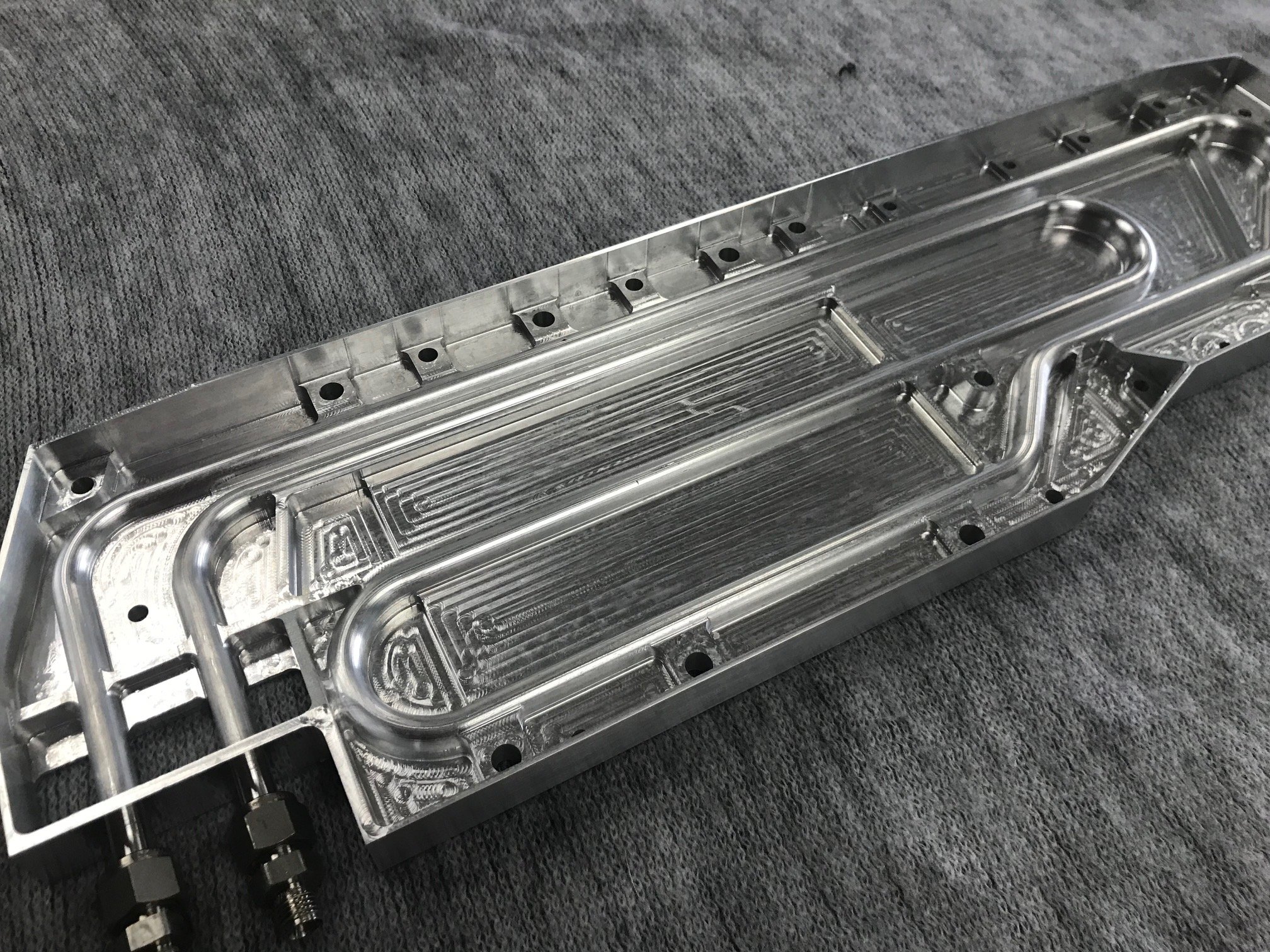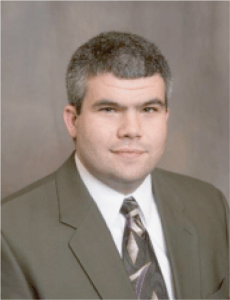
Fabrisonic utilizes Ultrasonic Additive Manufacturing (UAM), a patented technology which harnesses sound waves to merge layers of metal foil in a process that requires no melting. The 3D metal printing process creates complex components that have unique features not possible with traditional manufacturing techniques.
Our Ultrasonic Additive Manufacturing Process Is Different:
Read on to learn more about the unique capabilities Ultrasonic Additive Manufacturing has in the heat exchanger space.
Copper is an advantageous metal to use for heat exchangers because it has twice the thermal conductivity of aluminum. However, copper is three times denser than aluminum, so it poses a weight trade-off in-flight applications. A distinct benefit of UAM in comparison to other technologies commonly used to manufacturer heat exchangers is that Fabrisonic can selectively print copper in high heat flux areas where it is needed and then print the rest of the part out of aluminum to save on material cost and reduce weight.
Printing copper in high heat flux regions leverages its ability to quickly wick heat away. However, printing surrounding structure out of aluminum takes advantage of its lightweight and high strength properties. UAM can print most metals, and due to the low temperature of the welding process, dissimilar metals can be welded at will without concern for unwanted metallurgical interactions.
Our process specializes in dissimilar metals. Changing materials on the fly is quite challenging, if not impossible, in other additive processes. However, because UAM is a low-temperature process where the metals stay below 250F when printing, and the materials are off-the-shelf foils, we can simply change out our material feedstock, adjust our welding parameters, and we can be printing an entirely different metal in minutes!
Distinct lightweighting advantages of UAM:
The solid-state nature of Fabrisonic’s UAM bond allows for encapsulation of all manner of wires, fibers, and sensors into a metallic substrate. Since the metals do not have to be heated for bonding, electronics can be embedded without damage. This enables sensors, communication circuits, and actuators to be embedded into fully dense metallic structures for lasting security and reliability. For thermal devices, this means engineers can have thermal data at any point they want in a 3D printed part.
Sensors and electrical controls are an essential part of every industry. A common problem is the degradation of the exposed control elements from both corrosion and wear. Ideally, in such situations, it would be best to bury the electronics in solid metal to protect them. This isn’t possible with conventional manufacturing technologies so most companies resort to complicated seals that also degrade over time. Conventional processes such as casting and welding can occasionally create a protective structure, but these high temperature processes typically damage the exact components they are trying to protect.
Fabrisonic’s UAM process can eliminate these common issues to create lasting protection solutions including:
Historically, specialty heat exchangers have been made using traditional CNC machining to create planar arrays of cross-drilled holes. This limits the shape of the internal passageway to straight, planar channels. 3D printing now allows internal geometries to be fully optimized for localized thermal performance with varied shapes and complex 3D flow paths.
Using conventional manufacturing, if a designer needs to go beyond straight planar channels, complex shapes are made using a series of connected machined components joined via brazing or diffusion bonding. However, these additional steps are expensive, time-consuming, and undesirable on the production level. 3D printing removes all connections allowing for uniform thermal expansion and elimination of problematic joints.
Even with advanced methods such as brazing, air gap, material selection, and channel sizes can never be fully optimized. Metal 3D printing allows designers to optimize thermal performance with ‘impossible designs’ by removing traditional manufacturing geometry constraints. Channel cross section and unique flow elements can be easily integrated into a 3D printed heat exchanger. Multiple metals can easily be printed in the same part during one print job.
Fabrisonic’s patented low-temperature 3D metal printing process, Ultrasonic Additive Manufacturing (UAM), is an enabling technology that allows engineers to print otherwise impossible heat exchangers. With UAM, designers can achieve dissimilar metals anywhere in the device, CNC surface finishes on both the exterior and interior surfaces, as well as the ability to embed sensors at any location in a given geometry.
Fabrisonic has gotten closer to seeing its heat exchangers launched into space. Recently, Fabrisonic heat exchangers passed stringent NASA JPL qualification tests. You can read more in ‘Space-grade 3D Metal Printed Heat Exchangers‘, a recently published technical paper by Justin Wenning, Production Engineer at Fabrisonic.
Fabrisonic's patented metal 3D printing process, Ultrasonic Additive Manufacturing (UAM), enables joining alloys that have historically been difficult to weld including:
“Traditional manufacturing may have a few decade head start on producing heat exchangers, but UAM is on track as a revolutionary new way of designing and producing high-performance heat exchangers like mechanically pumped fluid loops and heat pipes.”

Justin Wenning-- Product Engineer Fabrisonic LLC.
When you tell a thermal engineer that they create a device that is lighter, more
efficient, and fits into a smaller space, they call you a liar...and then they start asking a bunch of questions.

Mark Norfolk-- President and CEO Fabrisonic LLC.
We're eager to help you with your next application. FIll out the form and a representative from Fabrisonic will be in contact shortly!